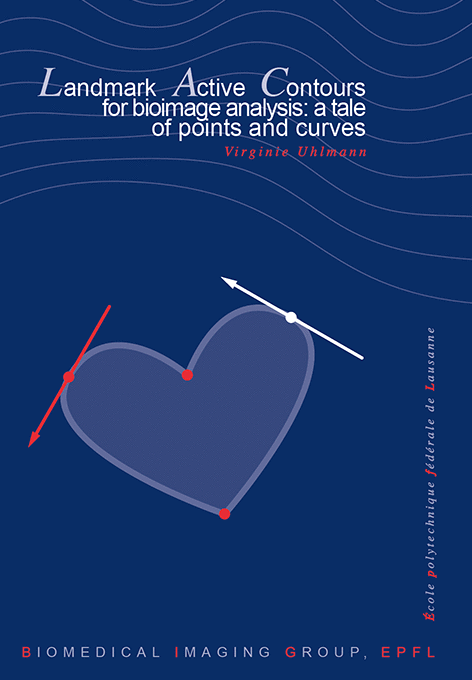Landmark Active Contours for Bioimage Analysis: A Tale of Points and Curves
V. Uhlmann
EPFL best doctoral thesis award in electrical engineering, École polytechnique fédérale de Lausanne, EPFL Thesis no. 7951 (2017), 263 p., December 1, 2017.
The problem of identifying the outline of objects in images can be approached from two starting points, either by considering localized features (landmarks, keypoints or regions), or by searching for global contours. Features are regions or points of interest and usually include a description of the local properties of the image around them. The definition of a feature is flexible. Most often, it consists of a list of desirable properties inspired by the application at hand. Algorithms are then designed to robustly detect occurrences of the feature in the image under the effect of various geometrical transformations. Contours, on the other hand, are (portions of) curves that can be delineated using deformable models, for instance relying on spline curves. Splines are in particular at the core of a large family of such models called spline-based active contours, or designer snakes. These methods can be customized and adapted to outline a large variety of objects in many types of images.
In this thesis, we aim at unifying these two strategies by bridging automated feature detection and spline-based active contour segmentation for bioimage analysis. Our work proceeds in three steps. First, we introduce and characterize the Hermite spline interpolation framework, a model that allows incorporating local information at each node in the spline curve. Then, we study the design of custom feature detectors based on the steerable filters formalism. With these two ingredients, we propose a semiautomated segmentation algorithm called the landmark snake, which is defined relying on Hermite interpolation and evolves a curve in the image to outline objects of interest using information provided by steerable features detectors. The Hermite spline formalism allows for a direct correspondence between control points on the spline curve and landmarks, simplifying the algorithm design and allowing for user-friendly interactions. The approach is generic enough to be used in a wide variety of data, as will be illustrated through real bioimage analysis problems in the context of collaborative work with external laboratories.

@PHDTHESIS(http://bigwww.epfl.ch/publications/uhlmann1702.html,
AUTHOR="Uhlmann, V.",
TITLE="Landmark Active Contours for Bioimage Analysis: {A} Tale of
Points and Curves",
SCHOOL="{\'{E}}cole polytechnique f{\'{e}}d{\'{e}}rale de {L}ausanne
({EPFL})",
YEAR="2017",
type="{EPFL} Thesis no.\ 7951 (2017), 263 p.",
address="",
month="December 1,",
note="{EPFL} best doctoral thesis award in electrical engineering")